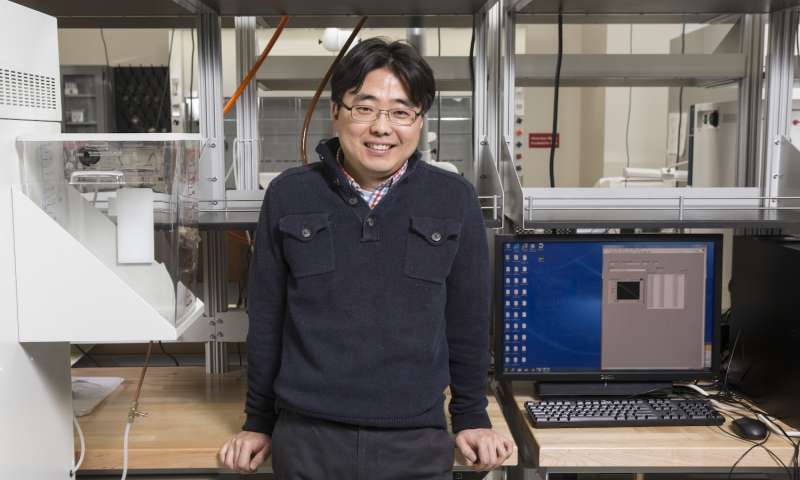Look out, oil, coal, and solar energy: Self-sustaining bacterial fuel cells may be the power of the future.

Scientists at Binghamton University, State University of New York created the world’s first micro-scale self-sustaining cell that generates power for 13 consecutive days through symbiotic interactions of heterotrophic and phototrophic bacteria.
The team placed the mixed culture in a cell chamber approximately one-fifth the size of a teaspoon (90 microliters). Phototrophic bacteria makes its own energy via sunlight, carbon dioxide, and water, while heterotrophic bacteria “feeds” on provided organic matter or bacteria to survive.
The cell was made visible to sunlight while an initial dose of food was added to the chamber to quicken the growth of the heterotrophic bacteria. The bacteria produced carbon dioxide waste through cellular respiration, which was then used to begin the symbiotic cycle.
After that phase was established, the scientists stopped adding the food sources for the heterotrophic bacteria, which allowed for the phototrophic bacteria to maintain the metabolic processes. These processes generated an electrical current of 8 microamps per square centimeter of the cell for 13 consecutive days. This power was approximately 70 times more than the current created by the phototrophic bacteria itself.
“Heterotrophic bacteria-based fuel cells generate higher power, while photosynthetic microbial fuel cells provide self-sustainability. This is the best of both worlds, thus far,” Binghamton University Electrical and Computer Science Assistant Professor Seokheun Choi, who is a co-author of the study, told Phys.org.
While the discovery certainly is hopeful, it’s important to remember that it is an early step in the advancement of bacteria-generated power. The tiny size of the cell grants a short start-up time and overcomes minor electrical resistances. Do note that a standard 42-in. high-definition television requires half an amp of electrical current to function precisely. This means that it would take 62,500 cells from the experiment to properly run. Theoretically, the cells would be a stronger match to provide power in remote or dangerous locations for low-power products, such as health monitors and infrastructure diagnostic sensors.
“There are some challenges of using this technique,” Choi told Phys.org . “Balancing both microorganisms’ growth to maximize the device performance and the need to make sure that this closed system will permanently generate power without additional maintenance are two we have found. Long-term experiments are needed.”
The study will be published in the Journal of Power Sources on April 30, 2017.
Advertisement
Learn more about Electronic Products Magazine





